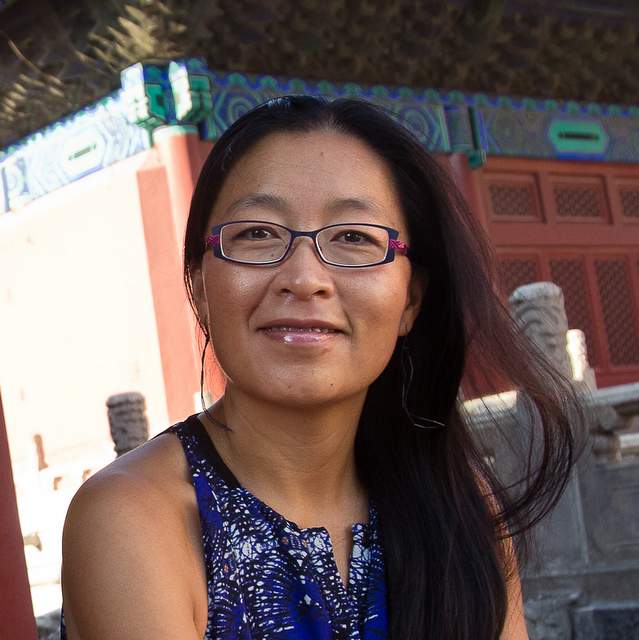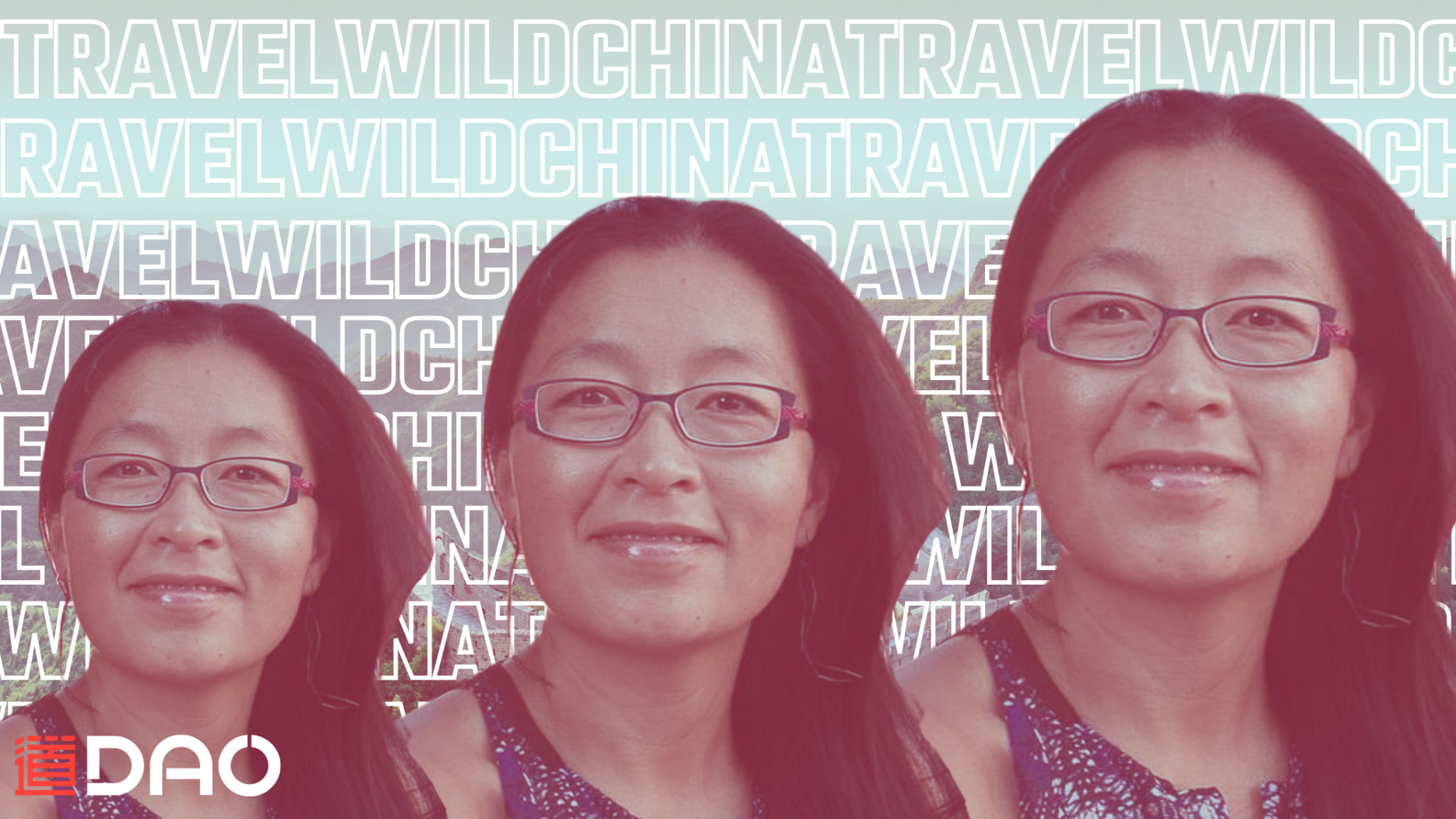Confidence in the government’s handling of COVID-19 has led to a steady recovery in China’s domestic tourism sector. Meanwhile, international destinations have had to adapt digitally as Chinese tourists remain confined to the country’s borders. Emily Riddell spoke to WildChina’s Mei Zhang about trends within China’s domestic tourism industry and how it has been affected by the pandemic.

Mei Zhang founded WildChina in 2000, and, together with her team, has transformed the company into an award-winning business: National Geographic Adventure’s ‘Best Adventure Travel Company on Earth’. Mei’s expertise has also led her to win a number of personal awards and accolades, and she is a frequent speaker on sustainable tourism and entrepreneurship in China. In 2012, she built another venture, Beshan, bringing sophisticated travel to a chic Chinese clientele. She has also published a book, Travels through Dali: with a leg of ham.
Connect with Mei via Instagram.
How has COVID-19 changed consumer travel trends in China’s domestic tourism industry?
COVID-19 has encouraged people to pursue a more active style of travel, representing a shift away from the previous more passive visits to tourism sites
It has spurred consumers to discover more remote areas within China. Before COVID-19, it was international backpackers who visited these ‘undiscovered’ far-flung areas, for example, in the Himalayas. Now, however, it’s the complete opposite. The young generation of Chinese are embracing the backpacker lifestyle and many are finding ways to work from home on the road. As a result, there is a lot more information about these destinations in Chinese rather than English.
COVID-19 has encouraged people to pursue a more active style of travel, representing a shift away from the previous more passive visits to tourism sites. In the past, Chinese tourism was dominated by large bus tours and embodied by the Chinese phrase ‘上车睡觉 下车拍照’ (get on the bus to sleep, depart the bus to take photos). While these tour groups are returning post-COVID, an increasing number of people have ‘departed the bus’ and are embracing nature and the outdoors.
Indeed, those who are travelling in groups want a more personal experience. In the past, buses carried 40/50 tourists but now a lot of people are organising smaller groups or private trips.
What role does food culture play in tourism within China?
Millennials and more sophisticated travellers are in pursuit of local flavours and the best restaurants in the area
15 years ago food culture didn’t play a role in tourism in China at all. The industry was based on the aim of feeding people at as low a cost as possible, and so, the norm was for tour groups to be rammed into huge banquet halls with mass-produced meals. Travellers didn’t seek out destinations based on food, but, as with most things in China, this has been changing fast. Millennials and more sophisticated travellers are in pursuit of local flavours and the best restaurants in the area.
Exploring Chinese cuisine is also a huge draw for travellers coming to China and WildChina’s culinary tours with food writer Fuchsia Dunlop sell out almost immediately.
Chinese consumers are becoming increasingly conscious about health and fitness, how has this played out in the tourism industry?
The growth of outdoor travel is irreversible now that people have discovered the joy of spending time surrounded by nature
It is evident in the increasing popularity of health spas, retreats, and health and fitness-themed tours. This is true both domestically and overseas with yoga retreats to Bali or spa holidays in Thailand becoming more common.
COVID-19 has accelerated the trend. Coming out of the pandemic, an increased concern about health and fitness has been combined with an appreciation for the outdoors. Initially, this stemmed from the fact that there were restrictions on meeting indoors. However, now that people have discovered the joy of spending time surrounded by nature with family and friends, the growth of outdoor travel is irreversible. Sports, such as hiking and camping, have gained new popularity; while outdoor activities that were already taking off, like skiing and water sports, are now doing so at a faster rate.
How have you seen environmental considerations evolve within tourism in China over the last 10 years?
There is still a long way to go in terms of building public awareness about environmental issues. WildChina holds Zoom sessions in which we invite experts from various fields, such as national park conservation, to share their knowledge. In one talk, in which our speaker was discussing how to live more sustainably, the WeChat room exploded after he listed eating less meat as attendees questioned how meat consumption is related to the environment.
Yet, our talks have attracted a young audience who are eager to learn and discover how they can add value.
How has KOL (Key Opinion Leader) marketing and celebrity ‘fan culture’ affected destination marketing in China?
Celebrities and KOLs are able to drive a fad for a destination very powerfully
Nowadays, awareness building is largely driven by KOLs and celebrities through direct-to-consumer marketing. Many Chinese brands have successfully adopted celebrities to drive awareness, in particular, homegrown lifestyle labels. The public first encounters them via a celebrity on Douyin (China’s TikTok), and the same fans will then switch to Xiaohongshu to learn more about the brand through videos reviewing and comparing products. Finally, the consumer will make a purchase on Taobao. The chain from awareness to endorsement to purchase is all conducted online, reducing the influence of the retail front.
In terms of destination marketing, celebrities and KOLs also have a very strong influence. Many have 50 million followers on social media platforms, like Weibo, and are therefore able to drive a fad for a destination very powerfully. For example, after the popular actress Yao Chen visited New Zealand, the country grew in popularity among young Chinese travellers. Social media users want to dream, be inspired, and imitate the lives of these celebrities.
How has livestreaming affected destination and travel marketing?
The expansion of livestreaming goes hand-in-hand with KOL marketing. Livestreaming channels on Douyin, WeChat and Xiaohongshu are so simple for consumers to use – all they need to do is press a button and there is no cost involved. Many users watch live broadcasts to explore interests or escape boredom and often do it simultaneously while eating or commuting. As a result, consumers’ time and discovery investment is very little which means that they are willing to try out a variety of destinations through their screens. Brands can therefore build a massive audience, especially for activities that people are unwilling to try themselves in real life.
To coincide with the 100th anniversary of the CCP, there has been a rise in ‘red tourism’. What is this and will it become more prominent within China’s tourism industry in the future?
The popularity of ‘red tourism’ highlights the confidence of Chinese consumers as they seek to discover, and embrace, their recent history and heritage
‘Red tourism’ refers to the origins and history of the CCP leading up to the founding of the People’s Republic of China in 1949. Chinese people are paying homage to the country’s achievements by visiting sites that played an important role in the Party’s journey, for example, Mao’s birthplace in Hunan and sites along the Red Army’s Long March. Some travellers are even buying low-cost costumes and taking part in role-plays as part of ‘red tourism’ trips.
The popularity of ‘red tourism’ highlights the confidence of Chinese consumers as they seek to discover, and embrace, their recent history and heritage. However, I don’t think it will stay a dominant feature of the tourism industry in the long run, especially once China opens its borders and there is competition for attention from international destinations.
How is the ‘guochao’ trend (support for brands or products that promote Chinese heritage or culture) affecting the tourism industry?
The confinement of tourists to China has provided remote corners of the country with a golden opportunity to be discovered
Guochao has taken off in the retail sector as consumers have become much more confident about Chinese-made goods. In fact, a lot of domestic consumer goods brands are marketing themselves by saying we understand Chinese skin/ hair/ body shape better than international brands.
The same is true of travel. This confidence in Chinese destinations has, in part, grown because travellers can’t leave China: if they could, many would undoubtedly still travel overseas. As such, COVID-19 has played a huge role in encouraging people to explore their own country. The confinement of tourists to China has provided remote corners of the country with a golden opportunity to be discovered. Chinese people are realising that they have a vast array of beautiful destinations within their borders, as well as the additions of familiarity and comforts.
Ten years ago, Chinese travellers abroad were concerned about drawing attention to themselves for asking for home comforts. Whereas, nowadays, a sense of ease with their own culture and way of living has brought increased confidence to ask for things that will make their travels more comfortable and convenient. This is exactly what Chinese guochao hotels can offer.
The Chinese tourism industry is constructing beautifully designed buildings in remote locations, such as the desert or Tibetan plateau, which cater to Chinese tastes. Rather than the disliked full English breakfast that many international hotels offer, visitors can enjoy congee and other Chinese dishes.
With this increased assertiveness, a lot of international travel operations are going to have to rethink their approach and cater to Chinese consumers’ demands if they want a piece of the market.
How have you (WildChina) been marketing to your international audience who can’t currently visit China?
During COVID-19, we wanted to bring pieces of China live to an international audience
Finding ways for our international audience to connect with China is something that has helped sustain me throughout COVID-19. Our main aim was to enable the mind to continue to roam, with or without a plane ticket.
First, we launched a monthly series called “WildChina on Air” where we invited some of the incredible experts we work with to speak about their field of study. Previously, our audience had to take part in one of our trips in China to hear from them, but, with that no longer possible, we wanted to bring these pieces of China live to an international audience. For one of the events, we had a researcher on-site in Dunhuang Grottos and he used the camera to show viewers specific details up-close. The series was incredibly popular as people felt like they were there. Another online event series that we launched,“WildChina on the Ground”, also provided viewers a chance to explore with our guides in Guilin or Beijing.
We set up a book club to encourage people to read about China and also hosted virtual cooking lessons. Furthermore, we launched a podcast that is geared toward how to plan a trip and explores regions of China with tour guides or a local.
What are your expectations for international travel for Chinese tourists post-COVID?
Chinese people will only feel confident about travelling when COVID-19 has been controlled both at home and the destination they are visiting
Chinese people are 很听话 – they listen to directions – so they will only go abroad when they’ve been reassured by the government that it is absolutely safe to do so. They are desperately eager to travel overseas but it depends on safety requirements being met.
At the moment, there is a huge gap in attitudes between the US/ UK and China. With the rollout of the vaccine, people from the former countries are largely treating it like a flu season and have learned to live with COVID-19. On the other hand, China is still under zero case tolerance. Chinese people will only feel confident about travelling when COVID-19 has been controlled both at home and the destination they are visiting – therefore, a complete rollout of the vaccine in both countries or zero cases where they want to go.
More remote international spots, which previously didn’t have much of a chance with Chinese tourists, could experience a growth in popularity. As with domestic trends, there may be a shift from iconic classic tourist sites to nature-focused sites, such as national parks, mountains and sports-based activities.
How can businesses persuade Chinese tourists that travelling overseas is safe in the face of negative stories about the international handling of COVID-19 in Chinese media?
Through the largely effective control of COVID-19, the Chinese government has built up huge trust among the majority of people. In contrast, there is a high level of distrust in the handling of COVID-19 outside China so I think it will be very difficult for international businesses to convince Chinese consumers otherwise.
Read more about travel in China:









